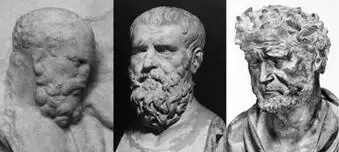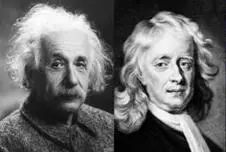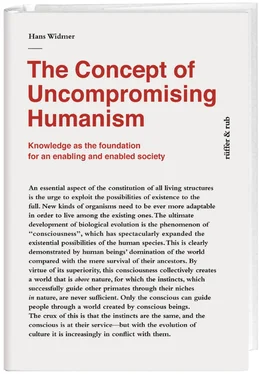At the start of the 20th century physical experiments were advancing into atomic dimensions, revealing an acausal, inexplicable world. In the 1920s a handful of brilliant physicists developed quantum mechanics, with which all the probabilities and inexplicable conditions could be calculated—but not explained, for which reason the uncertainties are stated to be objective and the probability calculations raised to the ranks of fundamental laws of nature. The expectation of causality at the root of all phenomena was challenged. Philosophy was dumbfounded, and conventional physics was expanded by a further colossal dimension in addition to the theory of relativity.
In deductive physics, all quantum-mechanical facts arise from interferences of the waves that are emitted by masses and transmitted by the continuum. The specific values are shown to be resonances—like the vibrations in musical instruments—and the uncertainties consequences of the fact that interactions occur in waves and it cannot be determined precisely where the masses from which they originated were located in the wave. Deductive physics thus explains all phenomena causally, yet the information on an atomic scale is never sufficient for more than the calculation of probabilities, for which quantum mechanics provides the perfect instruments.
Philosophers have used the quantum-mechanical facts to perform “bold works of genius”,Kant’s expression going as far as an explanation of free will, although quantum phenomena are no more significant than others that can only be determined statistically, such as the behaviour of gas molecules (thermodynamics) or traffic. In everyday life there is much that appears to be acausal, or “chance”—we meet a neighbour in a remote place, or lightning strikes. The chance element here is that we had not taken account of our neighbour’s trip round the world or of the electrical discharges from the sky. Both had causes, but neither had any kind of intention, concepts that are easily confused in everyday life. The thermal movements of the individual molecules of a gas also have causes, but they cannot be computed mathematically. But there are populations of them, which lead to the thermodynamic laws with the mean values of density and temperature.
Causes are frequently sought at too high a level, for example, there is no “cause of traffic”, only causes for the individual drivers or passengers. Similarly, there is no “cause of human beings”, merely a practically infinite number of evolutionary stages.
The categorisation as “chance” is therefore always based on a lack of knowledge 0r represents that which someone had not taken into account, the incalculable (Einstein: “The point where our calculations fail we call chance”), or that which has come about as a hyperstasis from a substrate underlying the phenomenon.
Causality is not equal to determination (“anonymous intention”). The latter would require a plan that “knows” the future outcome in advance and seeks to achieve it—from the smallest to the universal scale. But such plans are inconceivable, because they would contradict fundamental knowledge, in particular the development of thought from biological data processing and the mind from thought.
Could there not be a power in the universe, hidden from man, which acts, connects, steers, causes someone in London to cry out in the middle of the night only to discover subsequently that at that moment his brother in Alaska had died? There is much that is unexplained, but nothing is to be gained by explaining this away with the inexplicable (such as “there must be something out there”). It remains inexplicable until it is explained. The amount that is hidden is limited only by the imagination. But as long as it remains hidden, it cannot be used as an explanation. At any given time, the structure of knowledge only contains what has been discovered to date, and to talk of anything beyond that is in vain.
Long-distance effect, continuum
When children are asked what the sun is made of, they say something like: “From tiny shining pieces of cloud”; or where sugar dissolved in water has gone: “It’s in pieces so small that you can’t see them.” The arguments of the pre-Socratic philosophers were similar: they got as far as indivisible particles from which everything is made. Anaximander called this apeiron , while Heraclitus added that it was constantly in a state of flux and Democritus went further by saying that everything real was made up of compounds of it. With hindsight it can be seen that the continuum was no quirk of Anaximander, Plotinus, Descartes or Einstein, but an expression of the nature of thought.
Einstein clearly assumed that Descartes’ aether was immutably linked to Newton’s absolute space, which is not compatible with the “constancy of the speed of light”, and this is why he rejected the idea of an aether. If it is allowed that the aether (or whatever name is given to the continuum) can also flow, there is no longer any incompatibility with the a priori intuitions. At the latest when it comes to the expansion of the universe it is no longer possible to avoid an acceptance of flux.

Anaximander, around 611–545 BC; Heraclitus, around 545–475 BC; Democritus, 460/459–400/380/370 BC
It is logically essential to think of space as filled with a continuum when seeking to examine long-distance effects: if A is to have an effect on B, A must be in contact with B. Infants demonstrate that they understand this concept by pulling on a sheet in order to be able to reach an object that is resting on it. Descartes ascribed the transfer of effect to his aether; the constituents of the aether would collide, thus passing on momentum. All field theories state simply that: the field connects causes and effects through contact at extremely small (in mathematical terms: “infinitesimal”) intervals.

Albert Einstein, 1879–1955; Isaac Newton,
1643–1727
Since Anaximander the continuum has been an analogy for air, a gas consisting of molecules with potential—manifest in its continuous motion—and space. The continuum is and remains the “One”which cannot be further divided, like the sand in a sandbox from which children build castles.
Not only is it an essential prerequisite of empty space that there are permanent, impenetrable bodies—or the concept of space would be pointless—, but these can and must move, or the concept of time would be pointless. The continuum fills the framework provided by a priori intuitions.
If the continuum were a gas, the fundamental constants c, G and ħ would represent temperature, reciprocal density and free path length. To reiterate, the constituants as such do not have mass, but only volume, distance from one another and movement. Mass is only constituted through their dynamics.
What is the meaning of “existence”?
If all phenomena are traced back to bodies, their “existence” is determined by the existence attributed to the a priori intuition of “body”. Permanence and impenetrability say it all, and “existence” turns out to be anticipated by the a priori intuitions.
What is the existence of the mind? In terms of “matter”, the mind is information, the essence of which does not lie in the corporeal, but in structures. If it is understood that by the impenetrability of bodies it is not any fact that is meant, but rather an interaction, in other words the extent to which bodies block the way of other bodies, push them around or are pushed around by them—in the same way as small children discover bodies—, then by analogy it becomes clear that the “existence” of information also means the effect of information. Information is the structure that is communicated.
Читать дальше














